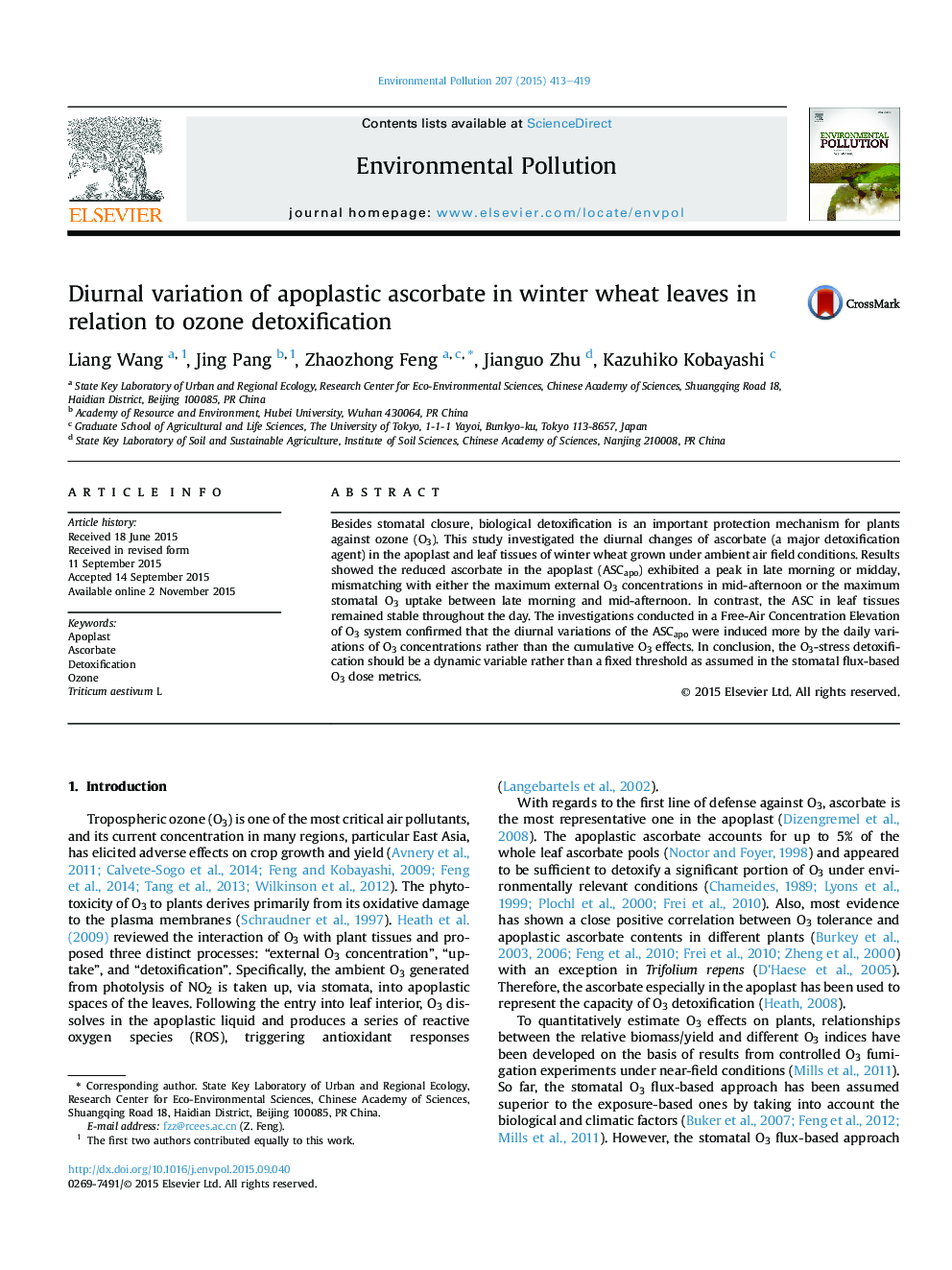| Article ID | Journal | Published Year | Pages | File Type |
|---|---|---|---|---|
| 6316213 | Environmental Pollution | 2015 | 7 Pages |
Abstract
Besides stomatal closure, biological detoxification is an important protection mechanism for plants against ozone (O3). This study investigated the diurnal changes of ascorbate (a major detoxification agent) in the apoplast and leaf tissues of winter wheat grown under ambient air field conditions. Results showed the reduced ascorbate in the apoplast (ASCapo) exhibited a peak in late morning or midday, mismatching with either the maximum external O3 concentrations in mid-afternoon or the maximum stomatal O3 uptake between late morning and mid-afternoon. In contrast, the ASC in leaf tissues remained stable throughout the day. The investigations conducted in a Free-Air Concentration Elevation of O3 system confirmed that the diurnal variations of the ASCapo were induced more by the daily variations of O3 concentrations rather than the cumulative O3 effects. In conclusion, the O3-stress detoxification should be a dynamic variable rather than a fixed threshold as assumed in the stomatal flux-based O3 dose metrics.
Related Topics
Life Sciences
Environmental Science
Environmental Chemistry
Authors
Liang Wang, Jing Pang, Zhaozhong Feng, Jianguo Zhu, Kazuhiko Kobayashi,
